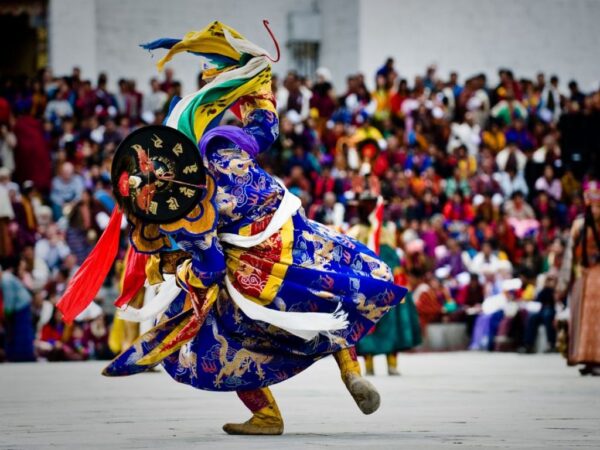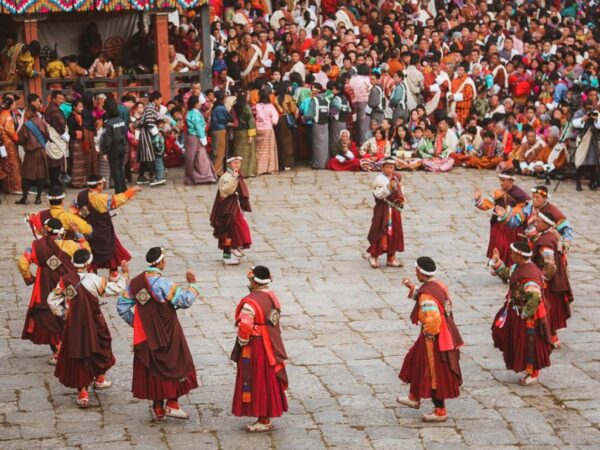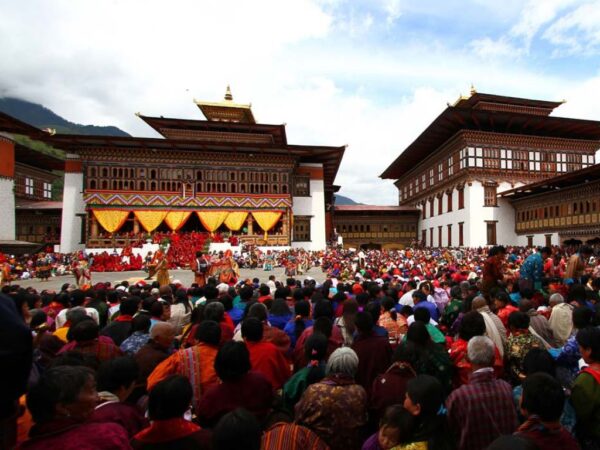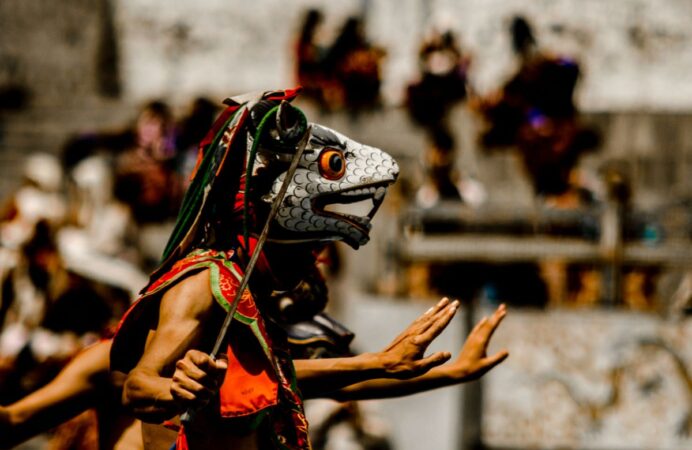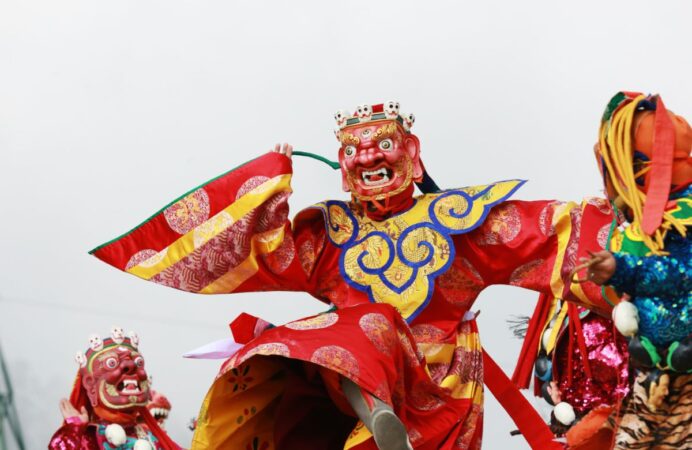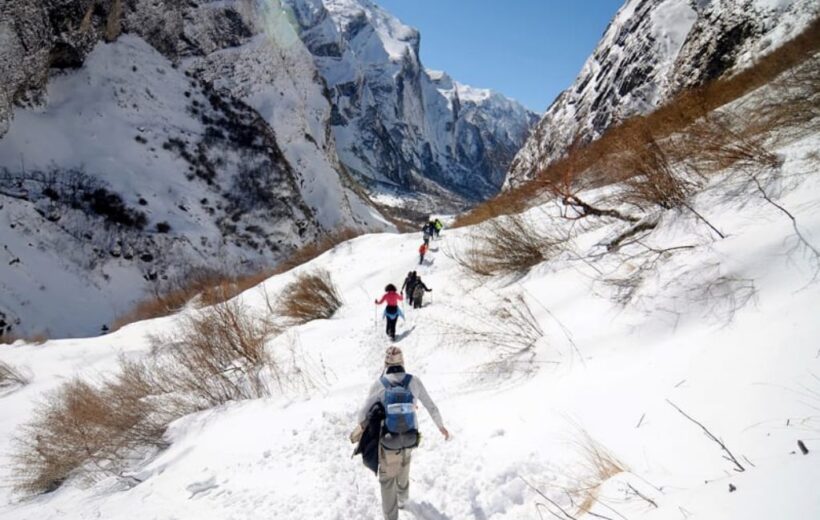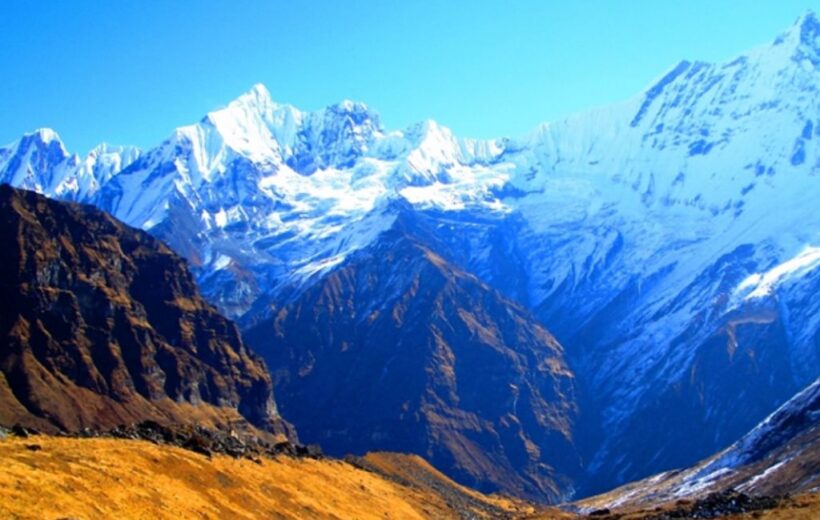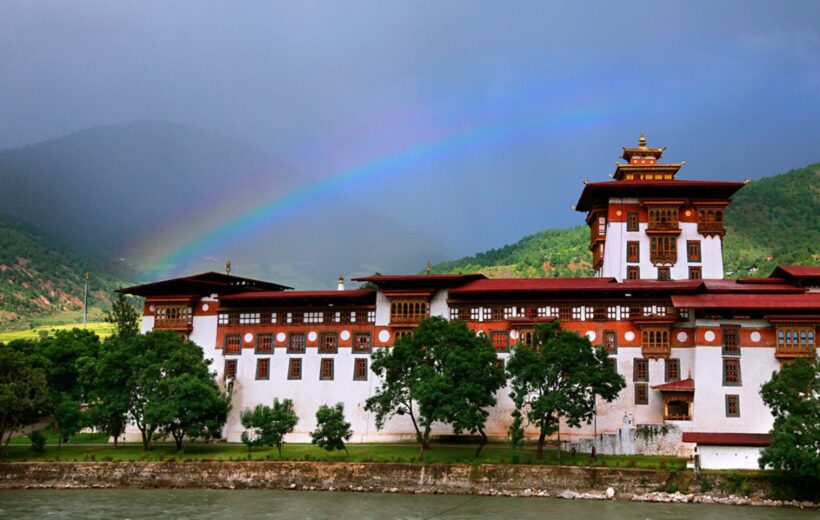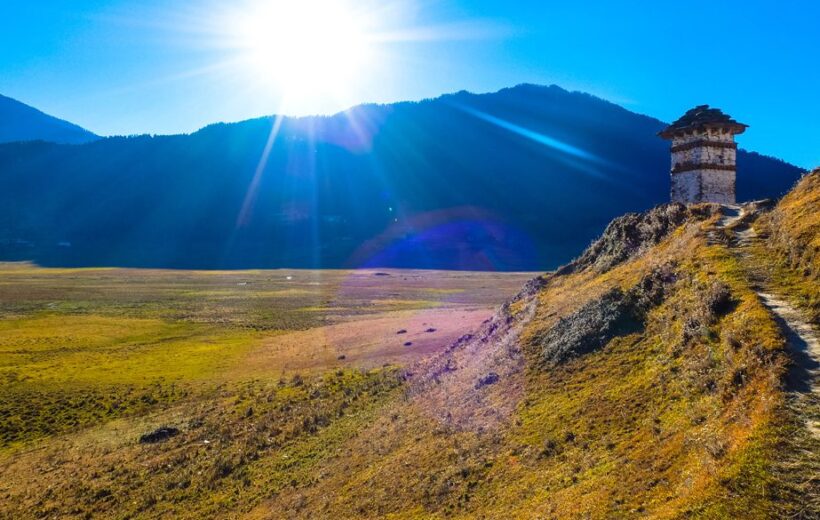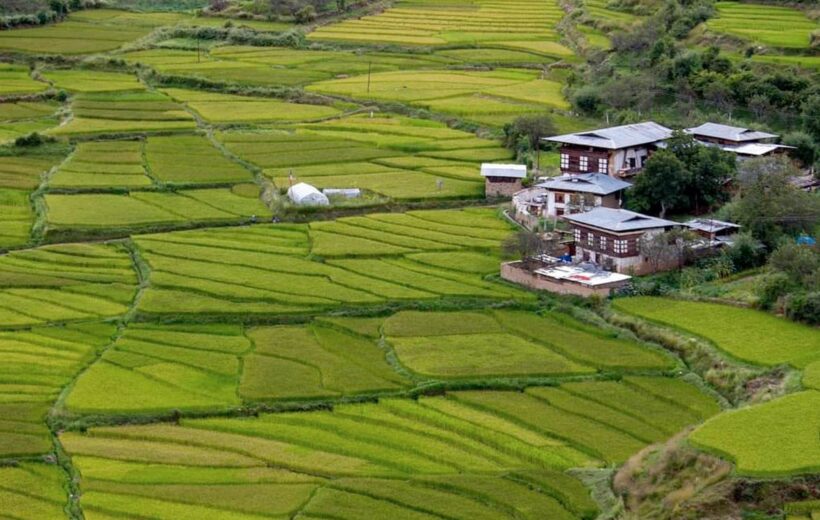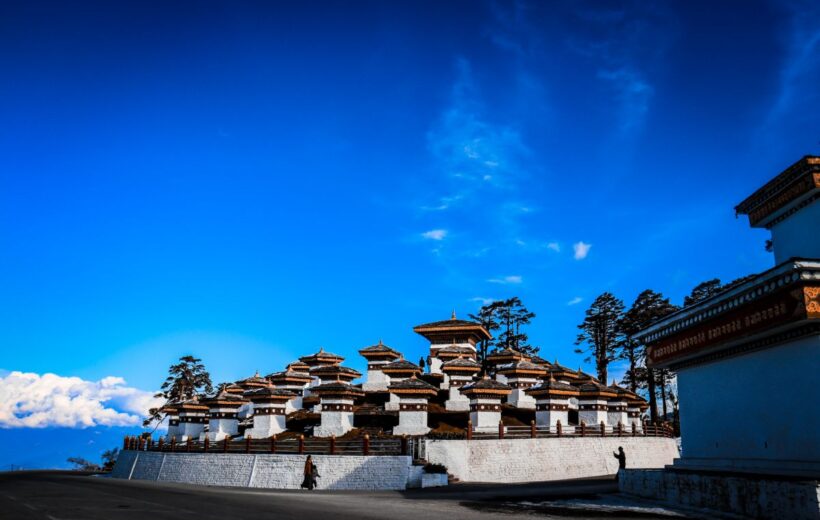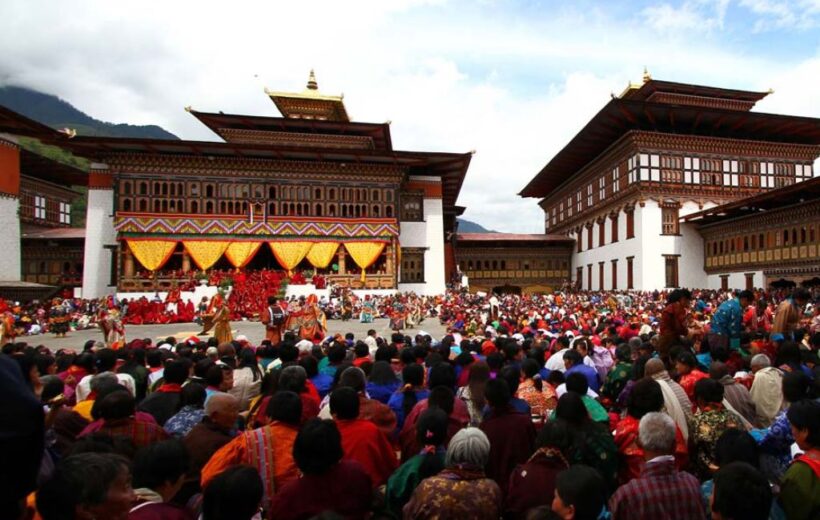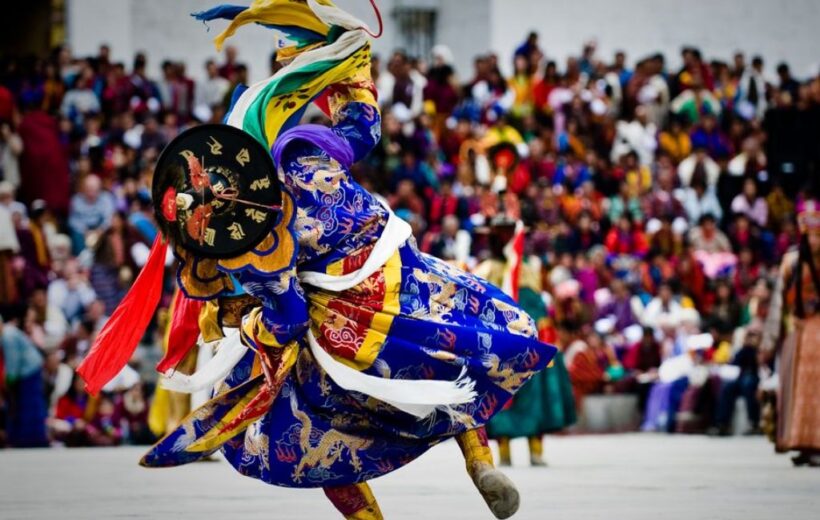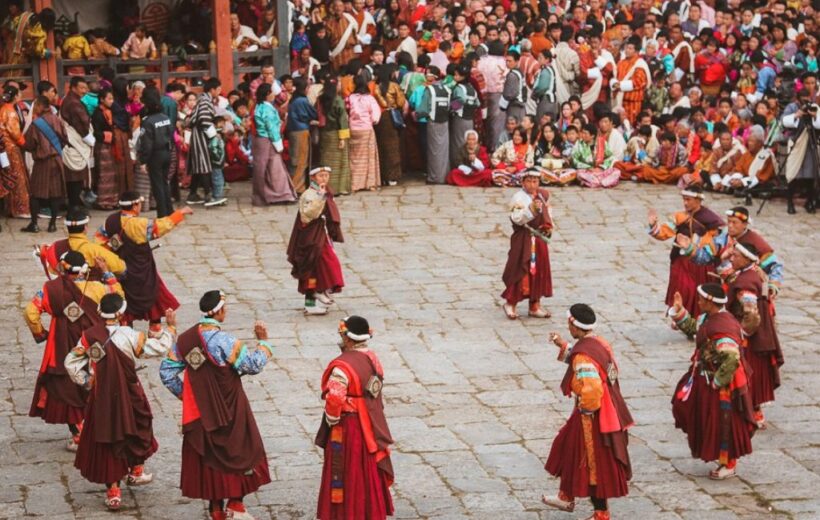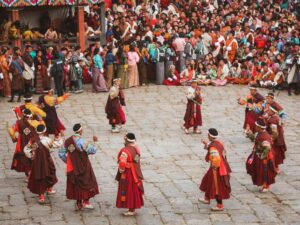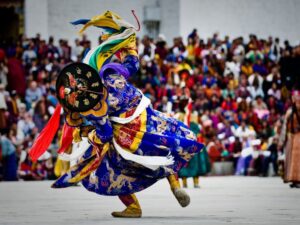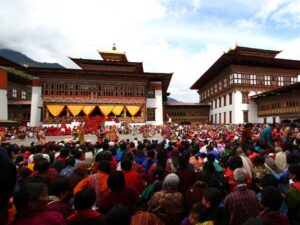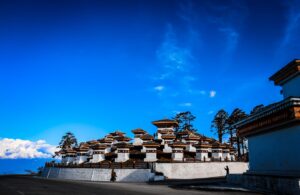Overview
Experience the best of Bhutan on this 10-day journey, from the bustling capital of Thimphu to the serene valleys of Phobjikha and Bumthang. This tour takes you through Bhutan’s cultural heart, visiting ancient monasteries, impressive dzongs, and picturesque landscapes. Highlights include the majestic Tiger’s Nest Monastery, the vibrant markets of Thimphu, and the tranquil beauty of Gangtey. With a mix of cultural exploration, scenic drives, and spiritual encounters, this trip offers an immersive experience into Bhutanese life and tradition.
Included/Excluded
- The Bhutan SDF
- All accommodations
- Meals and mineral water
- A licensed English-speaking guide
- A driver and vehicle
- Air fare
- A visa fee of US $40
- Alcohol
- Gifts/Souvenirs
- Travel insurance and personal bills
- Museums & Monument Fees
Tour Plan
Day 1: Arrival in Paro and Transfer to Thimphu (54 km, 1-hour drive)
Upon arrival at Paro Airport via DrukAir or Bhutan Airlines, complete your immigration formalities and meet your tour guide, who will accompany you throughout the trip. Drive to Thimphu and check into your hotel. After some refreshment, visit the following sites:
- National Memorial Chorten: A stupa built in memory of the third King, offering a peaceful spot where locals gather for circumambulation and prayer.
- Takin Preserve: Home to Bhutan's national animal, the takin, an unusual member of the goat family that roams the high altitudes of Bhutan.
- Tashichhoe Dzong: This impressive fortress houses the office of the King, the secretariat, and the central monastic body. It was originally built in 1641 and later reconstructed in the 1960s.
- Craft Bazaar: Explore this bustling market with over 80 stalls offering a wide range of traditional Bhutanese arts and crafts. It's a great place to buy authentic souvenirs. Overnight in Thimphu.
Day 2: Thimphu Sightseeing
After breakfast, continue your exploration of Thimphu:
- Kuensel Phodrang (Buddha Point): Visit the giant Buddha Dordenma statue and enjoy panoramic views of Thimphu Valley.
- Institute for Zorig Chusum: Also known as the Painting School, this institute offers courses on Bhutan’s 13 traditional arts and crafts. Visitors can observe students honing their skills.
- Folk Heritage Museum: Step back in time at this museum, which showcases traditional rural life in Bhutan. The main exhibit is a restored 19th-century farmhouse, complete with tools and household items of the era.
- Changangkha Lhakhang: This 12th-century fortress-like temple offers a peaceful retreat with stunning views of Thimphu Valley.
- Weekend Market: Held every Saturday and Sunday, this market is a vibrant spot where locals gather to buy and sell fresh produce, spices, and other goods. Overnight in Thimphu.
Day 3: Drive to Gangtey/Phobjikha Valley (Approx. 6 hrs drive)
After breakfast, drive towards the scenic Phobjikha Valley, crossing the Dochu-la Pass (3,088m). If the weather is clear, you’ll enjoy stunning views of several Himalayan peaks. At the pass, visit the Druk Wangyal Chortens, 108 stupas built by the Queen Mother to honor Bhutanese soldiers. Continue your journey through dense forests, passing Rinchengang Village, and arrive at the beautiful Gangtey Valley. Explore:
- Gangtey Monastery: The largest Nyingmapa monastery in Bhutan, offering a tranquil atmosphere and a deep sense of spirituality.
- Black-Necked Crane Information Centre: Learn about the endangered cranes that migrate to Phobjikha during the winter. The center provides telescopes for birdwatching and a small shop selling local handicrafts. Overnight in Gangtey/Phobjikha Valley.
Day 4: Drive to Bumthang (Approx. 5 hrs drive)
Today’s drive takes you through some of Bhutan’s most beautiful landscapes, including oak forests, meadows, and yak herder settlements. En route, visit:
- Trongsa Dzong: A stunning fortress and one of the most important in Bhutan, both historically and architecturally. It offers magnificent views of the surrounding area.
- Yathra Weaving Centre: Stop by this center in Zugney Village to observe local weavers crafting Yathra, a vibrant hand-woven woolen textile unique to the region. Overnight in Bumthang.
Day 5: Festival and Local Sightseeing in Bumthang
Spend the day immersing yourself in Bumthang’s rich culture:
- Mebartsho (The Burning Lake): A sacred pilgrimage site where devotees light butter lamps and make wishes. The site is linked to the legend of Pema Lingpa, a famous Bhutanese saint.
- Swiss Farm and Red Panda Beer Factory: Visit this family-run farm founded by a Swiss expatriate. It produces Swiss cheese, honey, apple cider, and the local beer, Red Panda. Beer and cheese tasting can be arranged. Overnight in Bumthang.
Day 6: Drive to Punakha (Approx. 7 hrs drive)
After breakfast, journey to Punakha, stopping en route to visit:
- Chhimi Lhakhang: Also known as the Fertility Temple, this monastery is dedicated to Drukpa Kunley, the "Divine Madman." Couples visit here to receive blessings for fertility.
- Punakha Dzong: Located at the confluence of the Pho Chhu and Mo Chhu rivers, this dzong is renowned for its stunning architecture and rich history. Overnight in Punakha.
Day 7: Punakha Short Hike & Local Sightseeing
Begin your day with a scenic hike to:
- Khamsum Yulley Namgyal Chorten: This beautifully crafted stupa offers commanding views of the Punakha Valley and is dedicated to promoting peace and harmony. After lunch, visit:
- Limbukha Village: A peaceful village known for its red rice cultivation and the annual 'Serda' festival, where locals carry peace flags. The hike to Limbukha offers breathtaking views of the Punakha Dzong and surrounding valleys. Overnight in Punakha.
Day 8: Drive to Paro (Approx. 4 hrs drive)
Drive back to Paro, where you’ll visit:
- Rinpung Dzong: An impressive fortress built in 1646, now housing the district monastic body and administrative offices. The dzong is also the site of the annual Paro Tshechu festival.
- Ta Dzong: Originally a watchtower, this building now serves as the National Museum, showcasing Bhutanese art, artifacts, and historical items. Overnight in Paro.
Day 9: Hike to Tiger’s Nest Monastery (Approx. 4 hrs hike)
Embark on a memorable hike to:
- Tiger's Nest Monastery (Taktshang Lhakhang): Perched on a cliff 900 meters above the Paro Valley, this iconic monastery is one of Bhutan’s most sacred sites. The hike is challenging but rewarding, with stunning views along the way. After lunch at the Tiger’s Nest Café, visit:
- Farmhouse: Explore a traditional Bhutanese farmhouse, offering insight into the daily life of local farmers. The architecture and decoration of these homes are unique and colorful. Overnight in Paro.
Day 10: Departure from Paro
After breakfast, your tour guide will escort you to Paro Airport for your onward flight. Bid farewell to Bhutan with memories of a lifetime.
Tour Map
Frequently Asked Questions
Bhutan is a year-round destination. There are four seasons: summer (June to August), autumn (September to November), winter (December to February) and spring (March to May). But because of the range of altitudes in the country, and the influence of the north Indian monsoons, the climate is incredibly varied.
In the south, the humid, subtropical climate is fairly consistent year-round, with temperatures between 15oC and 30oC. Central Bhutan, with its temperate forests, has a more seasonal climate, with warm summers and cool, dry winters. The northern regions are much colder during winter. Because of the high altitude, mountain peaks are snowy year-round and the lower reaches remain cool in summer.
In summer, the Indian monsoon season runs from late June or July to late September, mostly affecting the southern regions. Most farming activities take place in the summer, when crops thrive in verdant landscapes.
Autumn, from late September or early October to late November, follows the rainy season. It is characterised by bright, sunny days and some early snowfall at higher elevations. It’s the season of feasts and festivals as farmers reap the fruits of their work.
From late November until March, the crisp, clear and sunny winter sets in, with frost throughout much of the country and snowfall common above elevations of 3,000 metres. The winter northeast monsoon brings gale-force winds at the highest altitudes through high mountain passes, giving Bhutan the name Drukyul, which means Land of the Thunder Dragon in Dzongkha (Bhutan’s national language).
Bhutan’s generally dry spring starts in early March and lasts until mid-April. It is a botanist’s delight, with nature in full bloom. Summer weather commences in mid-April with occasional showers and continues to late June.
Visitors of all nationalities, except those from India, require a visa before entering Bhutan. For all visitors, except those from Bangladesh and the Maldives, this visa must be applied for and approved in advance of travel. Visitors from Bangladesh and the Maldives also require a visa, but this can be applied for and approved either in advance of travel or upon arrival in Bhutan.
Visitors from India are able to apply for a permit but are required to hold an Indian passport or an Indian voter ID card. For Indian nationals under the age of 18, a passport or a birth certificate can be used to enter and they must be accompanied by a legal guardian.
Nationals from Switzerland and Thailand holding diplomatic or government-official passports are eligible for a visa at their port of entry.
A correctly input visa application can take up to five days to process.
There is a one-off fee of US$40 for the processing of your application. This is payable at the same time as your Sustainable Development Fee (SDF), as part of the process of submitting your visa application.
All treks must be undertaken with an accredited tour operator or guide. Your tour operator will assist you with all the necessary logistics and safety precautions.
Please contact our hosts for the Department of Tourism’s list of approved tourism services.
The Sustainable Development Fee (SDF) is a daily levy paid by visitors to support Bhutan’s development. Since the kingdom first opened its doors in 1974, guests have played a critical role in our country’s growth.
The SDF is collected by the national exchequer and funds are allocated to various projects that create long-term, sustainable opportunities for the Bhutanese people, through free healthcare, education and training, upskilling the tourism and hospitality industry, improved infrastructure, environmental preservation and conservation, cultural preservation programmes and initiatives that support local businesses and economies. The SDF is also a vital means of maintaining the exceptional forest cover and carbon-neutrality for which our small nation is world-renowned and globally critical. The SDF also helps us to ensure that we can continue to offer guests tranquillity and an intimate experience.
The SDF is USD 100 per night for adults from all countries except for India. Children aged between 6 years and who have not yet turned 12 are eligible to pay USD 50 per night. Children who have not yet turned 6 years old do not have to pay any SDF.
The SDF for Indian nationals (showing a valid Indian passport or Voter ID card) is Nu. 1,200 (or the equivalent amount in Indian rupees) per person, per night. Children aged between 6 years and who have not yet turned 12 are eligible to pay Nu./INR 600 per night. Children who have not yet turned 6 years old do not have to pay any SDF.
SIM cards can be purchased from the Paro International Airport’s visitor information centre on arrival, or from branch offices of Bhutan Telecom and TashiCell, or from authorised agents in towns.
There are no rules about what visitors should wear. However if you are planning to visit places of religious significance, respectful smart-casual clothing that covers your body from shoulders to knees is appropriate and appreciated.
Yes, permits are required to enter National Parks in Bhutan. However the process can be done online and the permit should be issued quickly. Please visit this link for more information: https://docs.google.com/forms/d/e/1FAIpQLScM4k5SPaGI_GnV6NJuQHstpS5ai9G4wOlpLSq0fsy73EZK7A/viewform
While most monuments in Bhutan are free, some are chargeable. For the full list of monument fees, please click here for more information. Children below 18 years will have a 50% concession and children aged five years and below will be exempted. Most monuments are open from 9am – 5pm each day. In June 2023 it was announced that foreign visitors can now visit monuments whenever they are open to the general public, without any restrictions.

